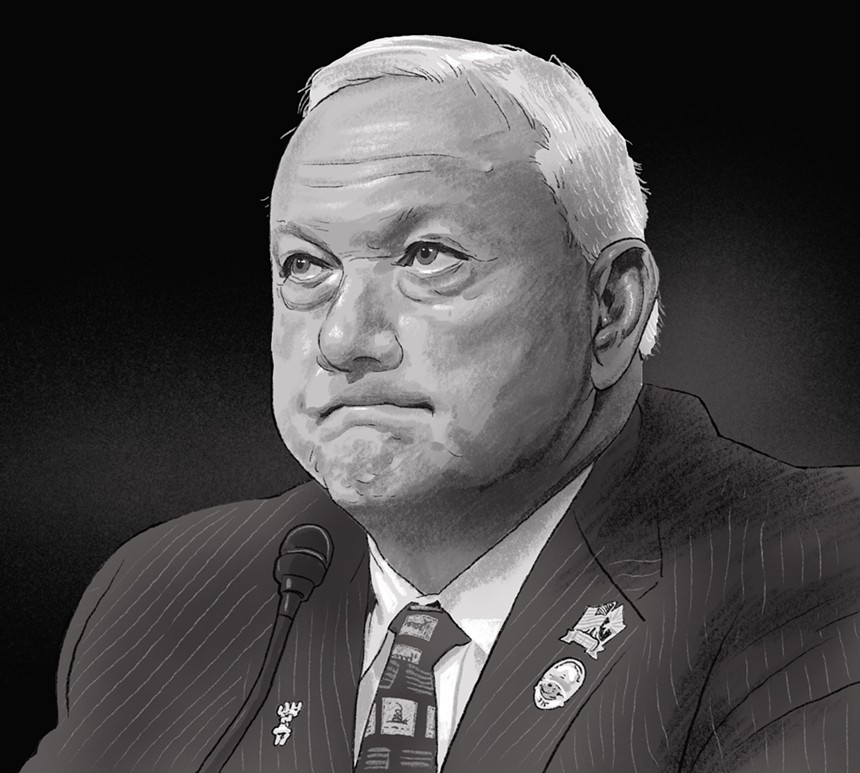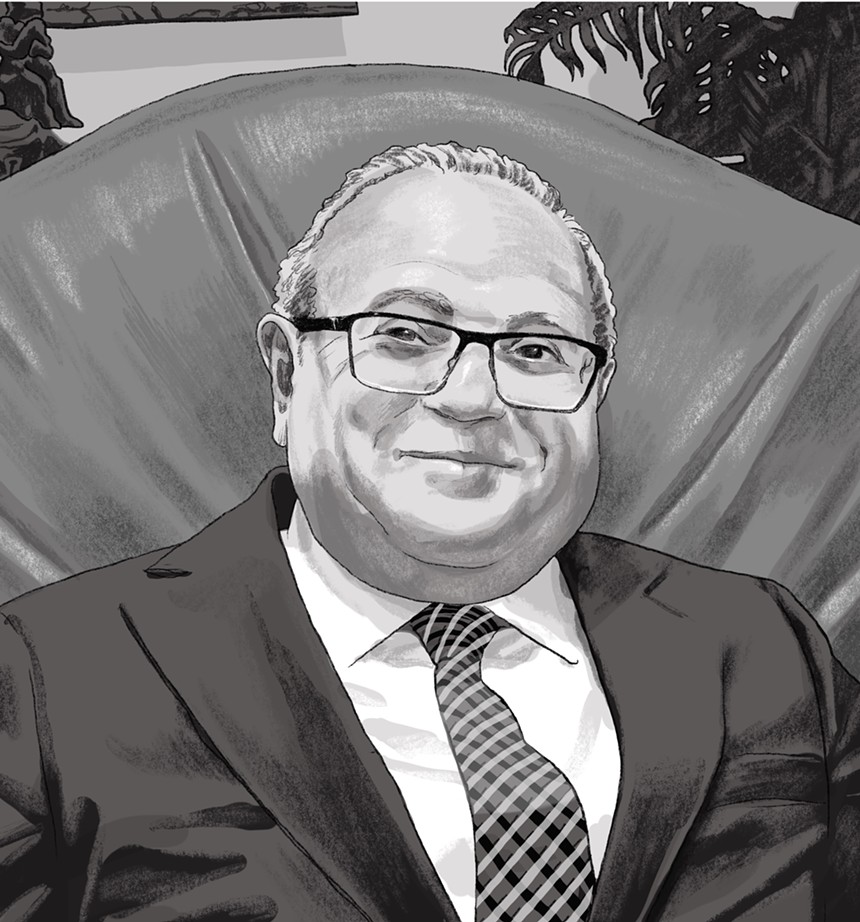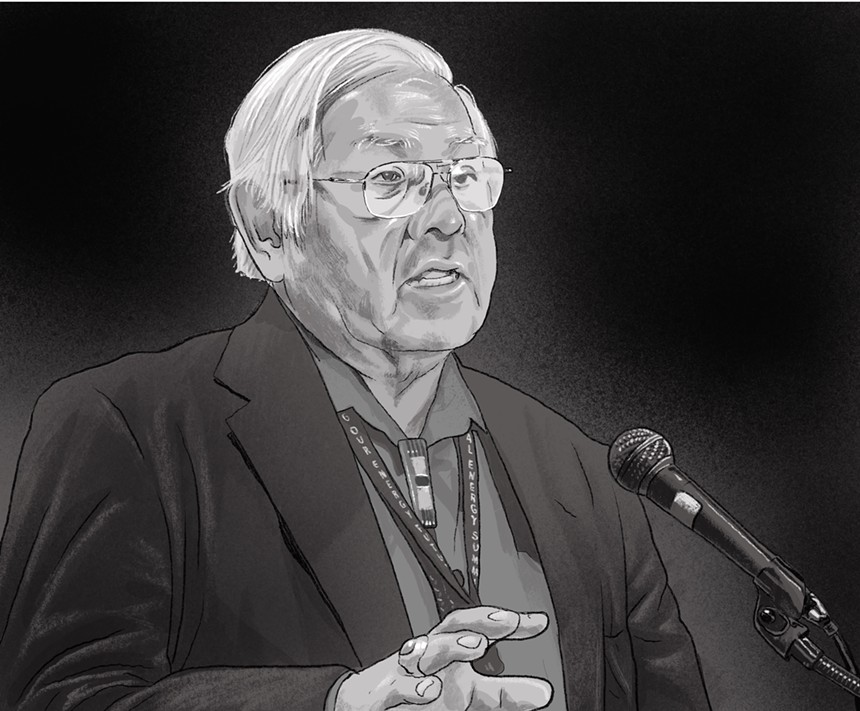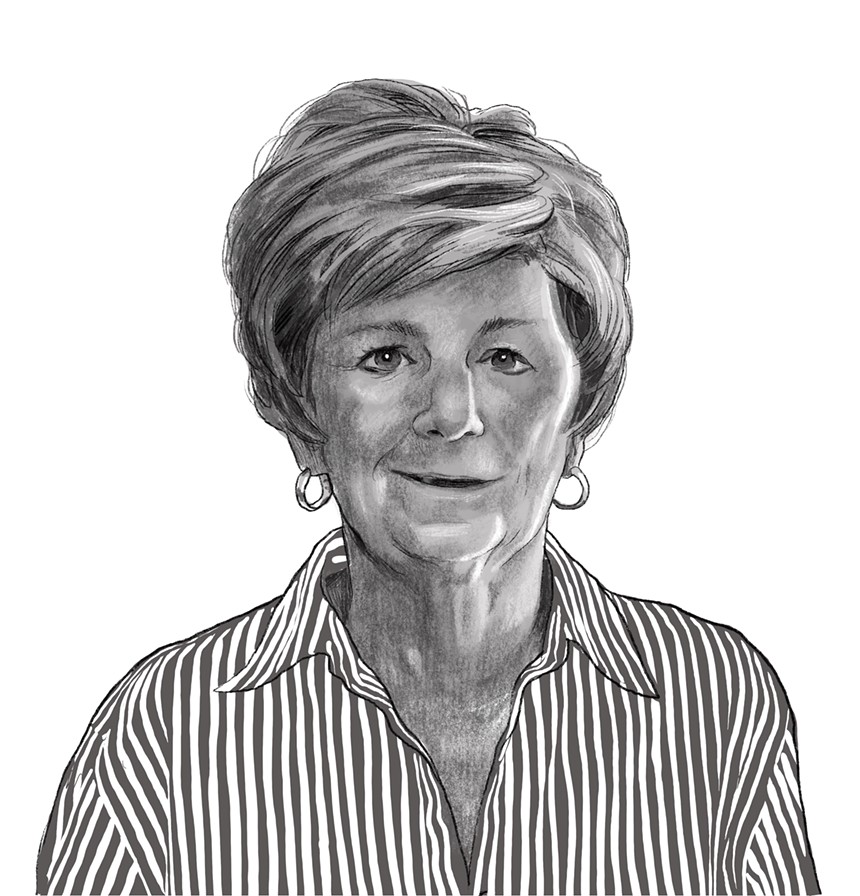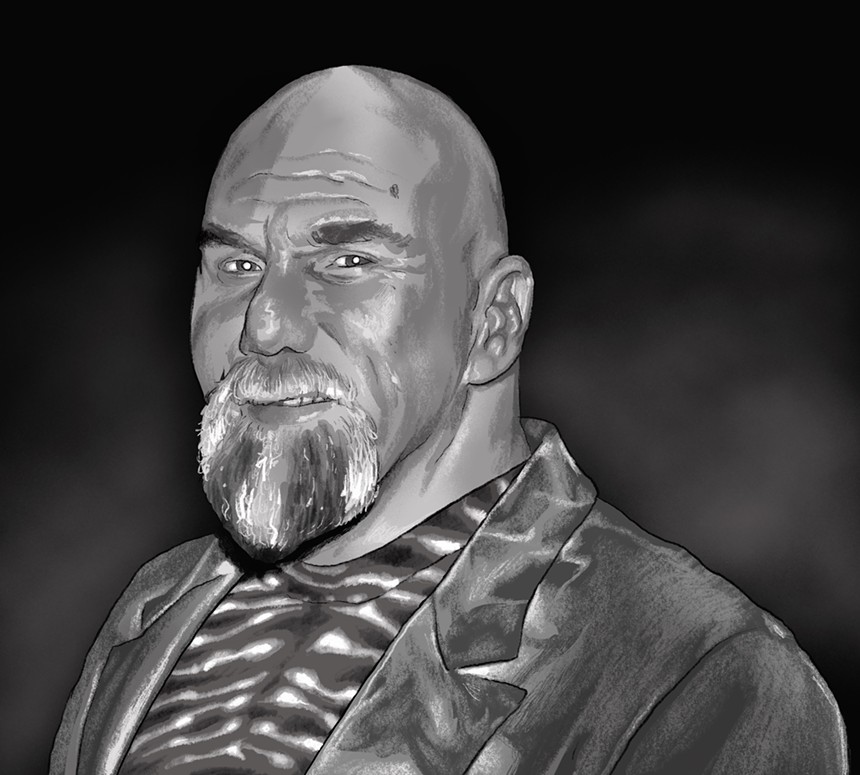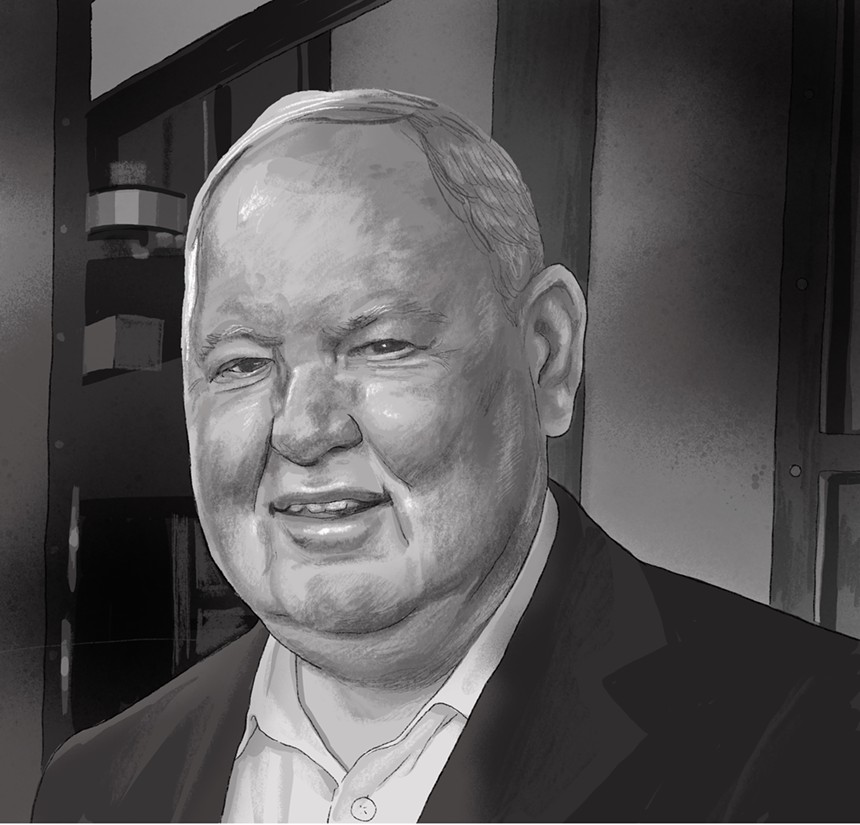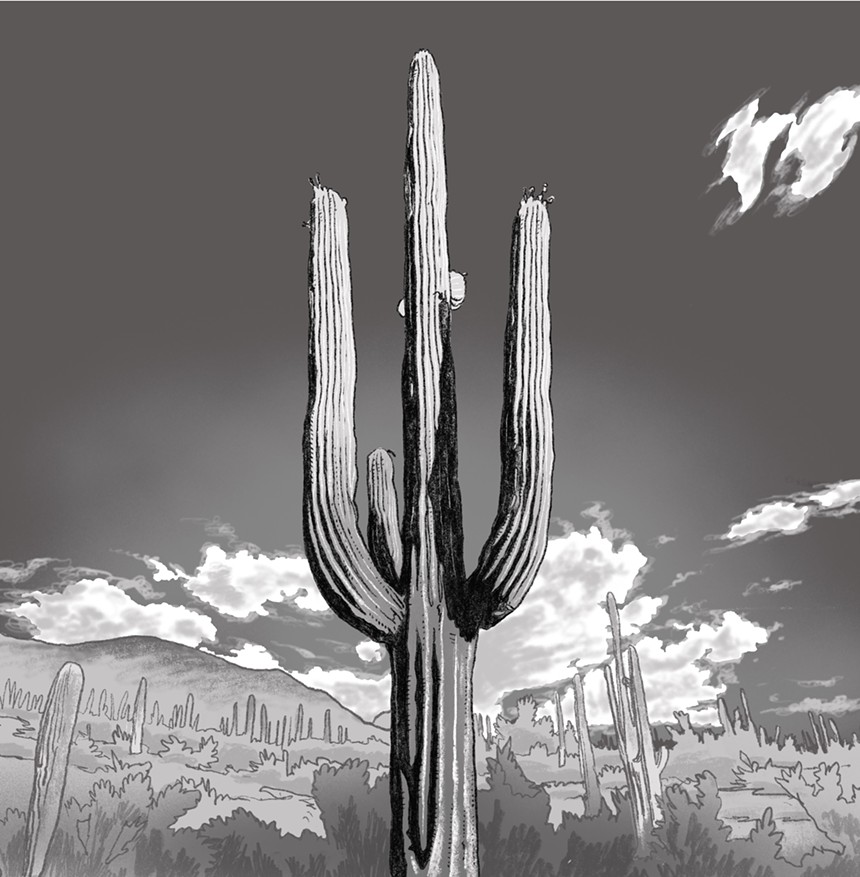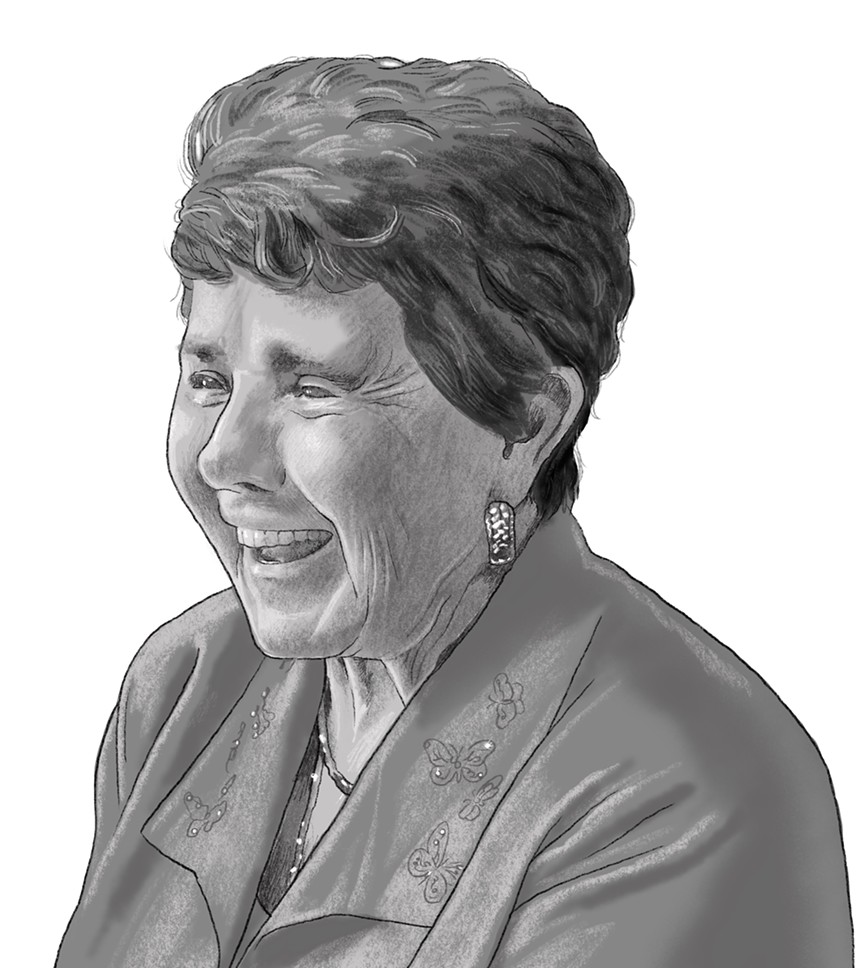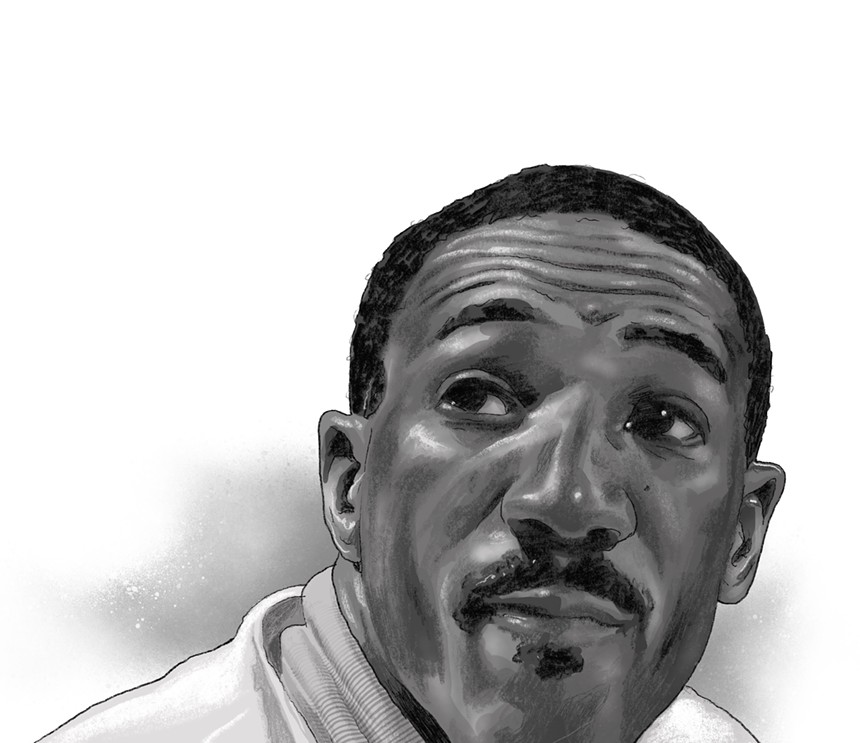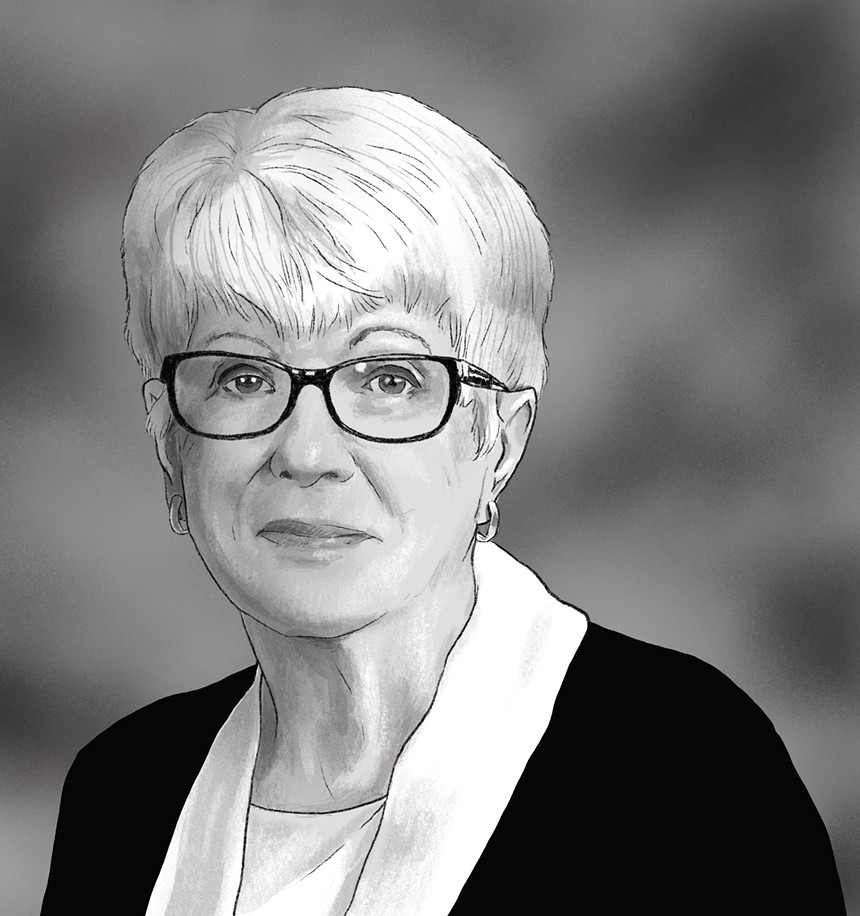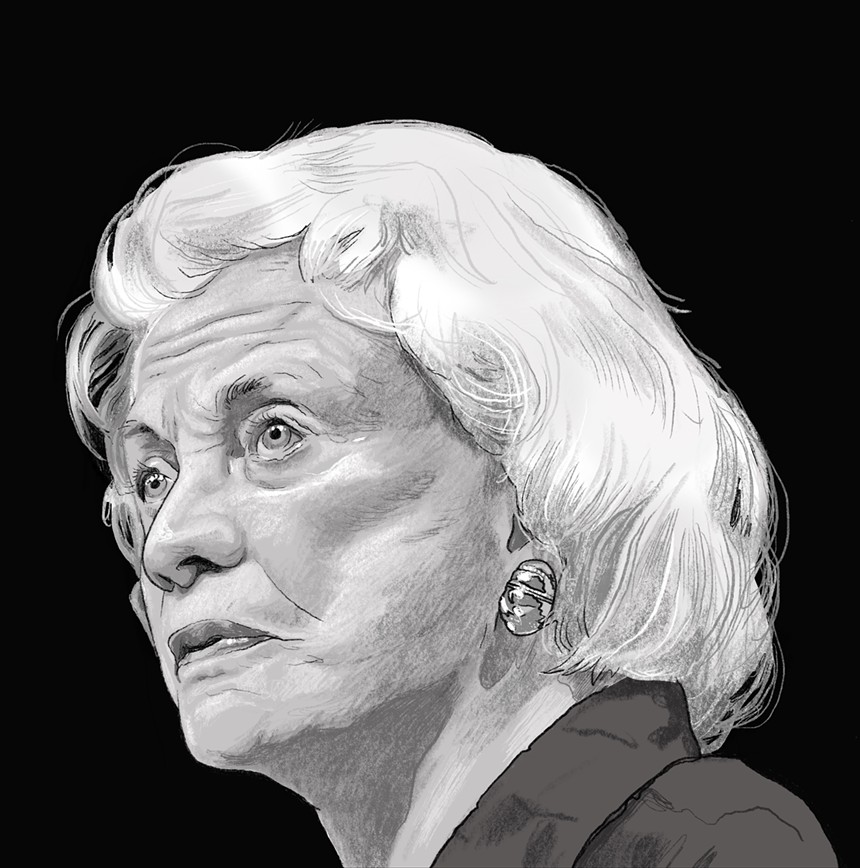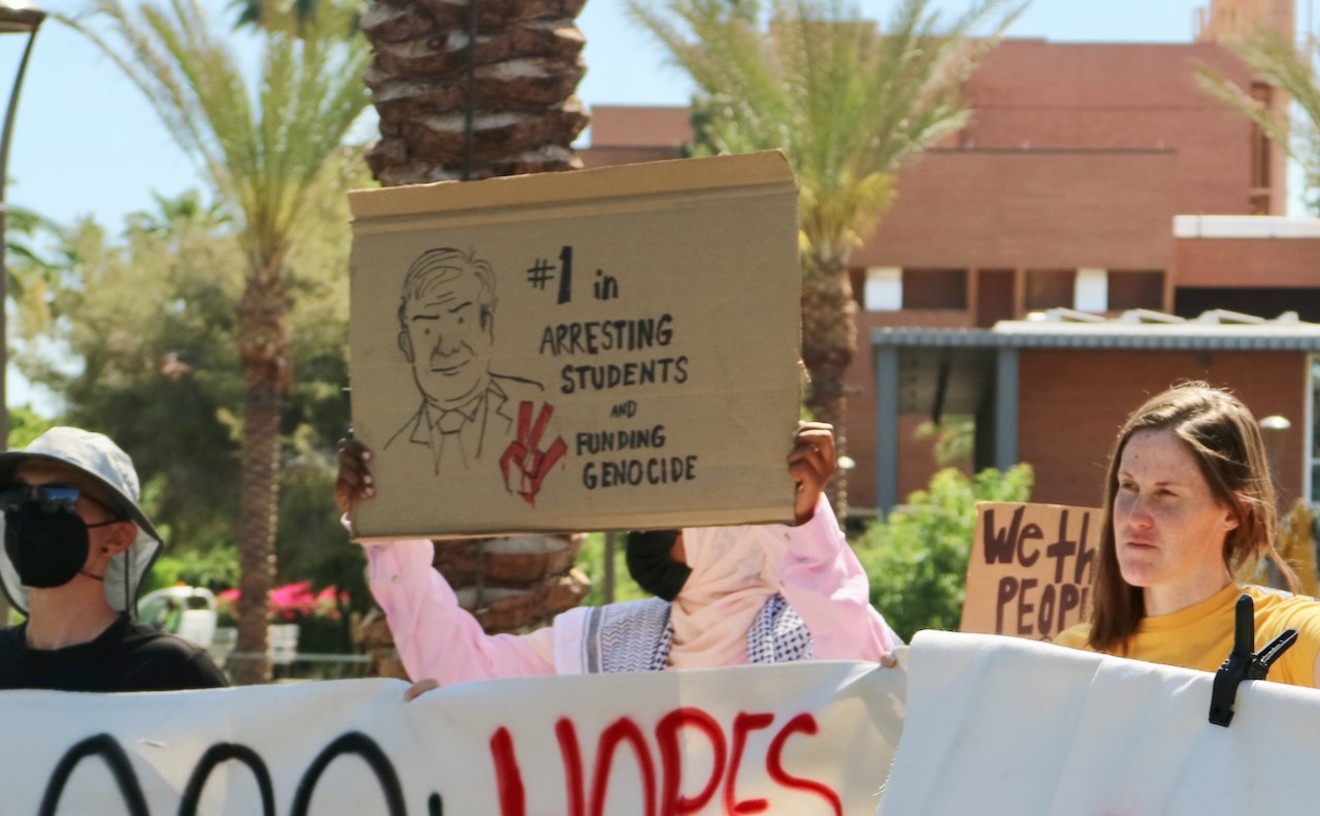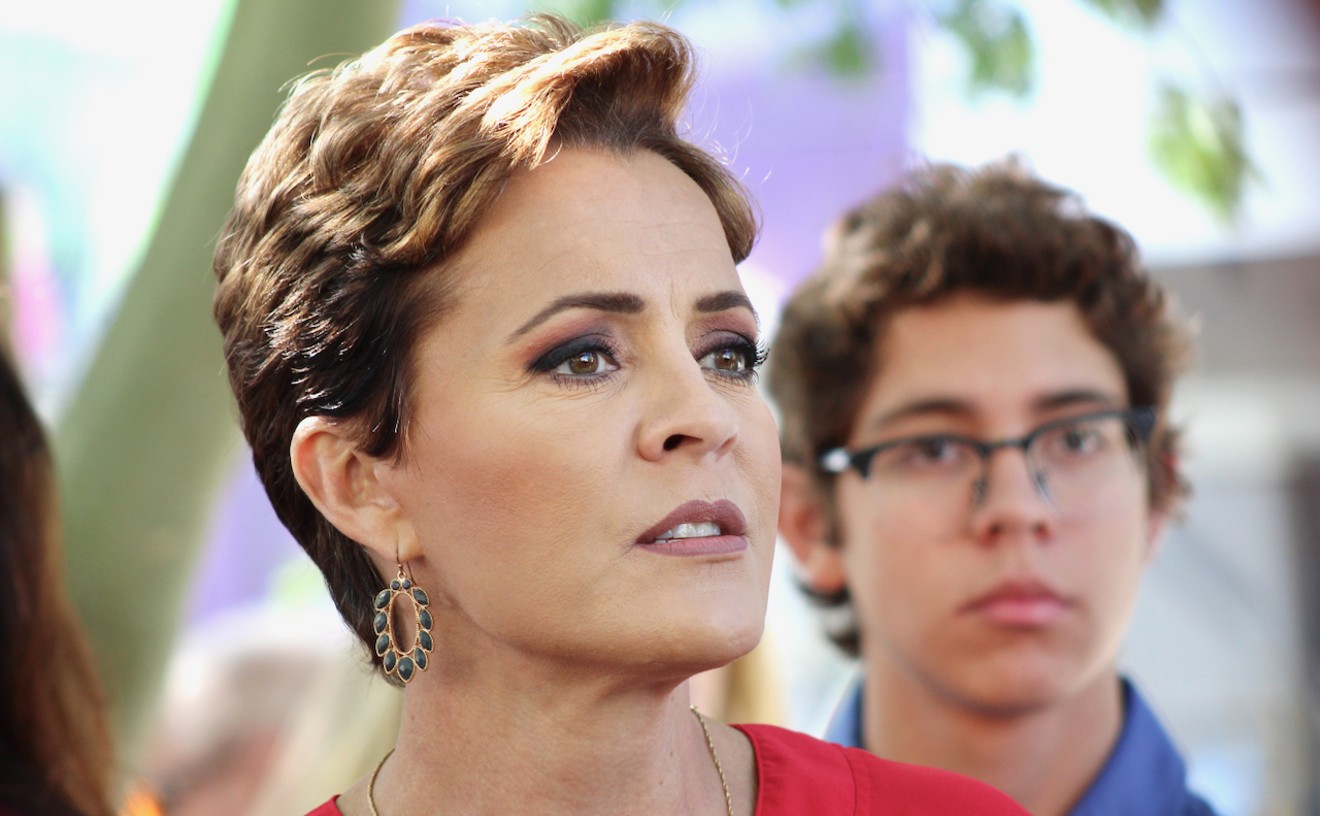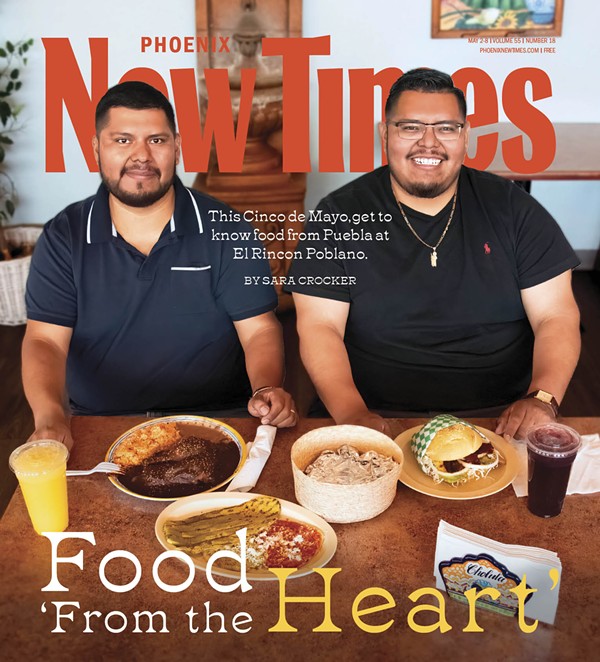A Supreme Court justice. A racist lawmaker. An NBA All-Star. LGBTQ+ equality trailblazers. Navajo Nation leaders. An artist and a wrestler. Hundreds of people who didn’t survive the record-breaking summer heat. These Arizonans left their mark on us.
Here's our by no means comprehensive list of notable Arizonans we lost in 2023.
Russell Pearce
Jan. 5
The legacy of Arizona legislator Russell Pearce is one of cruelty and hate. Pearce was the primary author of the state’s infamous anti-immigration legislation, Senate Bill 1070, which empowered local police to enforce federal immigration law, leading to a wave of racial profiling by police agencies. It was signed by Gov. Jan Brewer on April 23, 2010. Pearce, 75, died Jan. 5 at his home in Mesa, cause unknown.The statute's goal was to codify “attrition through enforcement” — in other words, ethnic cleansing aimed at the state’s Latino residents. Under SB 1070, which came to be known as the "show me your papers" law, anyone with brown skin was suspected of being present in the U.S. illegally. The backlash against the law led to a costly economic boycott of the state, massive protests and an ACLU court challenge that was only partly successful.
Pearce’s hit parade of hate included other racist legislation that he backed, such as an unconstitutional effort to repeal birthright citizenship and a ballot proposition denying in-state tuition to “Dreamers,” young immigrants who were to see protections under never-passed legislation in Congress. The former was unsuccessful, but the latter passed and was repealed by voters only last year.
In January 2011, Pearce’s fellow Republicans elected him president of the Arizona Senate, despite his documented ties to J.T. Ready, a prominent Valley neo-Nazi. But Pearce’s reign was short-lived. A coalition of progressive activists and moderate Republicans — many of whom, like Pearce, were members of the Church of Jesus Christ of Latter-day Saints — joined forces in a successful recall effort, booting Pearce from his Mesa Senate seat in November 2011.
Pearce’s attempted comebacks fizzled, and his ignominy in death, as it was in life, is well-earned. — Stephen Lemons
Zuhier Mahmoud Khatib
Feb. 4
Students at Arizona State University, Tempe residents and Valley visitors alike have frequented Haji-Baba on Apache Boulevard for decades. The market and restaurant is a staple in the community, and for 33 years, it was run by friends and business partners Zuhier Mahmoud Khatib and Nabil Torfa. On Feb. 4, Khatib died after spending three weeks in the hospital with COVID-19. He was 66. While customers will remember Khatib for his contributions to the Valley’s food scene, his wife and four children remember him as much more. After immigrating from Syria in his 20s, Khatib studied at ASU and opened a print shop. He also was an avid photographer. Later, he opened Haji-Baba with Torfa to share their Syrian culture and cuisine with Tempe customers. In addition to being a grocery market stocked with spices, tea, candy and other ingredients, Haji-Baba is home to a small restaurant that serves shawarma, gyros, falafel and hummus. Torfa continues to run the business without his late business partner and friend. Following Khatib’s passing, Tempe Mayor Corey Woods declared Feb. 4 "Zuhier Mahmoud Khatib Day." — Tirion Boan
Jack Chee Jackson Sr.
March 5
Born on the southwestern edge of the Navajo Nation in tiny Leupp, Arizona, Jack Chee Jackson Sr. committed much of his life to serving his beloved people, the Diné. For decades, Jackson was an educator. He taught at Window Rock High School and later held several positions at Diné College (formerly Navajo Community College), including director of the Office of Diné Education and Philosophy, where he worked to integrate Diné beliefs into the college's curriculum.
From 1980 to 1984, Jackson served on the Navajo Nation Council, at which point he was elected to the Arizona House. He served in both chambers of the Arizona Legislature from 1985 to 2004, becoming known as a formidable voice for Diné and other Native people.
Jackson advocated successfully for greater education funding for Diné communities, ensuring that they received tax funds that cities and counties in Arizona had long been receiving. During his last term in the Arizona Senate, he served alongside his son, Jack C. Jackson Jr.
On March 5, Jackson began his journey to the spirit world at the age of 90.
Jackson Sr. was Kinyaa’áanii (Towering House Clan) and born for Áshįįhí (Salt People Clan). His maternal grandfather was Táchii’nii (Red Running into Water Clan), and his paternal grandfather was Todich’ii’nii (Bitter Water People Clan). — TJ L’Heureux
Peterson Zah
March 7
On March 7, Peterson Zah died at age 85 in Window Rock, the capital of the Navajo Nation. The location was significant for the politician and tribal advocate, who was the first elected president of the Navajo Nation. Zah initially led the Nation for a four-year stretch in the 1980s as tribal chairman, which was, at the time, the highest recognized position. In the 1990s, he again took office, this time as president. Throughout his life, Zah was ingrained in tribal politics, working to reduce the impacts of mining and fighting for compensation for workers who suffered health issues from their time in the uranium mines. He also worked with the Hopi Tribe on a historic land dispute, pushed through an amendment allowing peyote to be used for religious practices and was a special assistant to the president of ASU, helping to enroll more Native American students. In a statement posted by the Navajo Nation’s Office of the President, current President Buu Nygren expressed his condolences. “The Navajo Nation lost one of its iconic leaders last night, Dr. Peterson Zah,” Nygren’s statement said. “It’s a big loss for the Navajo Nation. I want to let Indian Country know, as well. He was a huge tribal advocate across Indian Country and America.” — Tirion Boan
Rhonda Walden
May 11
The guests who danced beneath the glowing lights of Rhonda Walden’s LGBTQ+ bars have mourned the loss of their friend, confidante and community leader since her death in May. The restaurateur opened a series of LGBTQ+ hang out spots throughout her lifetime. Born in Texas, Walden moved to Arizona just in time for her senior year of high school. At the age of 21, with years of experience in the hospitality industry, she embarked on her first business pursuit, opening Happy Gardens in North Phoenix. Over the next 40, years she owned several bars, including Country Club Bar and Grill, which is now Pat O’s Bunkhouse Saloon, and Talk of the Town, which she renamed Desert Rose.
Walden’s communal spaces were imbued with the culture of her travels. Growing up as part of a military family, she had spent time in Germany and other European countries. Aside from permeating her restaurant’s menus, inspiration from Walden’s life abroad infiltrated her time off, as well, and she frequently would spend time with her partner trying different cuisines around the Valley.
Despite her worldly knowledge, Walden was a lover of good ole' country music, and in 1987, she opened Cash Inn Country with Carol Shearer. On any give night, diverse couples could be seen line dancing or singing karaoke under red lights. One review on the now closed locale’s Foursquare called it “the friendliest gay bar in Phoenix.” We dubbed it Best Lesbian Bar in our 2008 Best of Phoenix issue.
Walden may be gone, but the legacy and community she made space for in Phoenix won't be forgotten. — Itzia Crespo
‘Superstar’ Billy Graham
May 17
Hulk Hogan owes a debt to the late “Superstar” Billy Graham, as do Ric Flair, The Rock and other legendary pro wrestlers. In the 1970s, Graham portrayed one of wrestling’s most memorable, flamboyant and groundbreaking bad guys, using his charisma, style and physique to redefine the archetype of a big-mouthed villain. As a star in the World Wide Wrestling Federation (now WWE), Graham was a larger-than-life strongman with bleached blonde hair, huge muscles and an even bigger mouth. His bombastic interviews, often filled with Muhammad Ali-like poetry and bragging, established him as a trailblazer in the art of wrestling promos.
Born Eldridge Wayne Coleman in Phoenix in 1943, Graham's journey began with homemade weights in fifth grade. After a stint in the Canadian Football League, he trained under wrestling legend Stu Hart in Calgary, later joining the WWWF and winning its world championship in 1977.
Graham never again reached the same heights of success, retiring in 1987. He spent his remaining years dealing with health issues, such as diabetes and congestive heart failure. Following his death in May after an ear and skull infection, many paid tribute to Graham’s influence. According to journalist Dave Meltzer, "If it wasn't for Billy Graham, this industry would be so much different than it is." — Benjamin Leatherman
Michael 23
June 6
A rich, vibrant arts community doesn’t happen on its own. It requires people to work, to care, to connect, to create. Phoenix lost one such beloved figure this summer when Michael Hudson, better known as Michael 23, died of heart failure at the age of 53. Michael 23 founded the Thought Crime art collective and Firehouse Gallery, but his greatest gift to the Phoenix arts scene was more intangible. A friend called him “a contagious dreamer,” someone whose vision inspired others to conceive and create new art, new initiatives and new ideas. Michael 23 may be gone, but his gift lives on. — Jennifer GoldbergJim Larkin
July 31
Jim Larkin fought for decades. For free speech. For immigrants. For the victims of police brutality. The co-founder and longtime publisher of Phoenix New Times helped build a company that at its pinnacle owned alt-weeklies across the country. Larkin joined New Times in 1972 thanks to a handwritten note to co-founder Michael Lacey. They teamed up to create a legacy of challenging public officials and taking on the powerful. "He never stopped being a journalist at heart. In the fiber of his being, he had the DNA of doing what these papers did," Tom Finkel, editor-in-chief of Miami New Times and a longtime colleague of Larkin's, told New Times in August.
Larkin and Lacey sold their company — since renamed Voice Media Group — in 2012 to a group of company executives. After the sale, the pair continued to run Backpage, which they launched in 2004 to compete with Craigslist. It was Backpage that haunted Larkin until his death.
Larkin and Lacey sold the site in 2015, though when federal officials seized it and shut it down in 2018, the pair faced a host of charges for what federal prosecutors said was a case about human trafficking facilitated through ads on the site. A trial in 2021 ended in a mistrial. In 2023, federal prosecutors tried again. But a week before the trial, Larkin took his own life at age 74. — Matt Hennie
The Saguaros
Summer 2023
Saguaro cactuses dot our desert landscape, delight residents and tourists alike, and stand as bold symbols of Arizona. Except when they start withering and dying in record numbers, as happened this summer. The July heat wave, which kept temperatures at or above 110 degrees for a sanity-shattering 31 days, was particularly cruel to our cactuses, which require a period of cooling down at night to avoid internal damage. The die-off made national headlines, accompanied by sad photos of toppled, desiccated saguaros laying desolate in the sun. Tania Hernandez, a research scientist at Desert Botanical Garden, told Reuters plant physiologists suspect the phenomenon was due to the extreme heat and drought brought on by climate change, meaning that our cactuses will continue to be at risk for many years to come. — Jennifer GoldbergNelda Majors
Aug. 1
Nelda Majors and Karen Bailey were together 50 years before they told their families they were a couple and nearly seven more until that commitment was recognized by the state of Arizona. Majors and Bailey championed marriage equality in the state and across the country, and were among the first two same-sex couples to tie the knot in Phoenix on Oct. 17, 2014, when the state’s ban on gay marriage was struck down in court. It was the culmination of a love story that spanned decades, and one that the Texans who made Arizona their home shared with others to break down stigmas and advocate for LGBTQ+ equity. When Majors died on Aug. 1 at age 84 after a battle with cancer, advocacy group One Community said she was a “central part of the inspiration behind the ONE Community Unity Pledge, the largest equality pledge in the nation, that continues to inspire support for equal protections for LGBTQ+ people in Arizona and across our nation.” Majors is survived by Bailey, her partner of more than 65 years; her great-nieces Marissa Diamond and Sharla Curtis, who Majors became a guardian and mother to; and a grandchild. — Sara Crocker
Heat deaths in the Zone
Every year since 2015, the number of people who have died from heat-related deaths in Maricopa County has increased. This year, 579 heat-related deaths were confirmed, with at least 45% of them being people who were unhoused when they perished. That amounts to about 260 people.As the deadly heat continues to increase, so too does the number of people at the greatest risk of dying. The city’s twin crises — a lack of affordable housing and homelessness — have put more people on the street during the scorching summer months.
In the Zone — Phoenix’s longtime homeless encampment before a judge declared it a public nuisance and ordered it removed earlier this year — death was a daily affair for those fighting to survive. Disputes often ended in violence; one man’s body was found in a burning dumpster and could be identified only months later.
But if violence didn’t come for the unsheltered, the record-setting heat certainly did. Makeshift tents and a lack of air conditioning were scarcely enough to survive in a place that reached 110 degrees for 31 straight days in July. Air conditioning reportedly was down at CASS, Phoenix’s largest shelter, on days when the temperature reached 118 degrees.
Roosevelt White III, a 36 year-old Zone resident who suffered from diabetes and cardiovascular disease, died on a hot day in September. White was a volunteer worker for Feed Phoenix and one of hundreds who did not survive the heat.
We mourn the loss of the Valley's most vulnerable — those who fell through the cracks and lived in horror, finding little help and dying under the unforgiving Phoenix summer sky. — TJ L’Heureux
Walter Davis
Nov. 2
Long before Devin Booker, Steve Nash or Charles Barkley, NBA All-Star Walter Davis was the face of the Phoenix Suns. Known by nicknames such as "Sweet D” and "The Man with the Velvet Touch,” the 6-foot-6-inch shooting guard mesmerized fans with smooth shooting and versatile gameplay during his 11 seasons in Phoenix .Hailing from North Carolina, Davis excelled at every level, winning titles in high school, leading UNC to an NCAA championship game, and securing a gold medal at the 1976 Olympics with the USA men's basketball team.
Selected fifth overall in the 1977 NBA Draft by Phoenix, Davis quickly made his mark, earning Rookie of the Year honors and becoming a six-time All-Star. With a career average of 20.5 points per game, his partnership with Suns legends Alvan Adams and Paul Westphal led to multiple playoff appearances, but an NBA title eluded them during his tenure.
While issues with addiction and involvement in the Suns’ mid-’80s drug scandal dominated his later career, Davis’ legacy endures. Remembered for his time in a Suns uniform, Davis died of natural causes in November at age 69, leaving behind a lasting impact on Phoenix basketball. — Benjamin Leatherman
Thelda Williams
Nov. 14
From championing infrastructure upgrades to opening the first dog park in downtown Phoenix, Thelda Williams tangibly left her mark on the city. She moved to Phoenix from Omaha, Nebraska, in 1971 with her husband, Melvin Williams. He would later become a Phoenix police officer, and she would serve as a Phoenix councilmember for 30 years. William’s three-decade stretch began in 1989, and although she was never elected mayor, she served as the city’s interim leader in 1994, 2011 and 2018. Her final stint with the mayor’s office lasted nearly a year until Kate Gallego took up the mantle in 2019.
"Her profound love for Phoenix, and its future was evident in every decision she made. Thelda's legacy will continue to inspire and impact generations to come," councilmember Betty Guardado said following Williams’ passing in November.
Although she did not live to see it to see its complete implementation, Williams' legacy will include a $5.7 billion improvement plan for Phoenix Sky Harbor International Airport. Over the course of 20 years, the plan is expected to support the continued increase in passengers and cargo planes that utilize the airport.
Williams also will be remembered for spurring on multiple major construction projects, such as the Footprint Center and The Thelda Williams Transit Center in downtown Phoenix. — O’Hara Shipe
Sandra Day O’Connor
Dec. 1
Sandra Day O’Connor transcended her humble beginnings as a rancher's daughter to become a pioneer who inspired generations of women. The nation’s first female U.S. Supreme Court justice, O’Connor wielded considerable influence on the nine-member court. Twice, she helped form the majority in decisions that upheld and reaffirmed Roe v. Wade, the landmark court case that made abortion a constitutional right for women. O’Connor also was the deciding vote in cases involving affirmative action, national security, campaign finance reform and separation of church and state.
O’Connor was a longtime Arizona lawmaker and judge before being named to the Supreme Court in 1981. When she retired in 2006, she was replaced by Justice Samuel A. Alito Jr. who quickly tried to undo several of her landmark rulings. Nevertheless, O’Connor’s legacy lives on through the women who followed in her trailblazing footsteps.
“We at the Supreme Court mourn the loss of a beloved colleague, a fiercely independent defender of the rule of law and an eloquent advocate for civics education. And we celebrate her enduring legacy as a true public servant and patriot,” Chief Justice John G. Roberts Jr. said of O’Connor’s passing at age 93. — O’Hara Shipe

